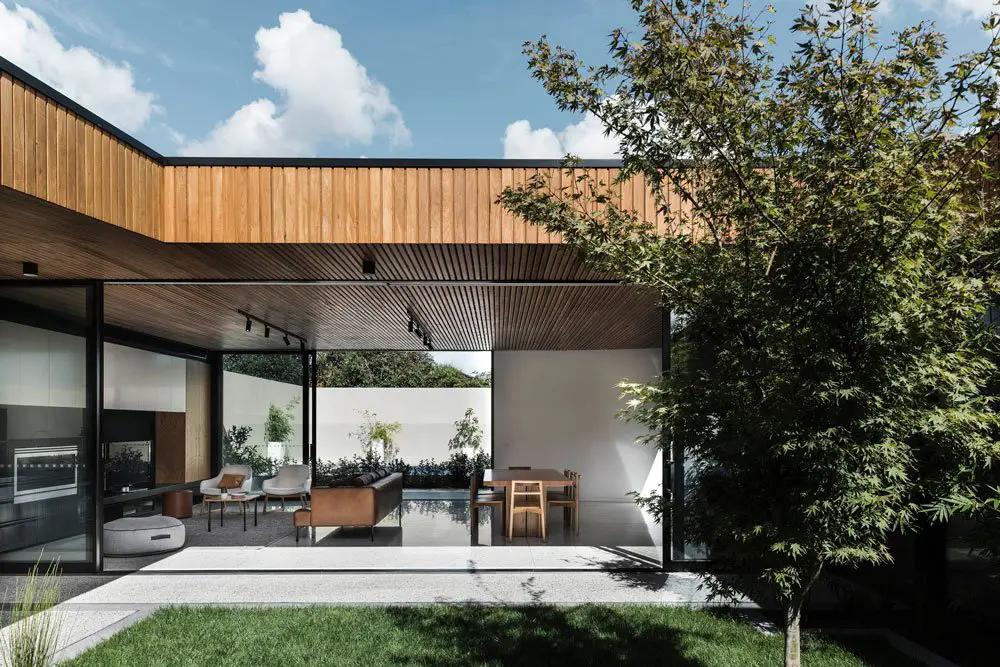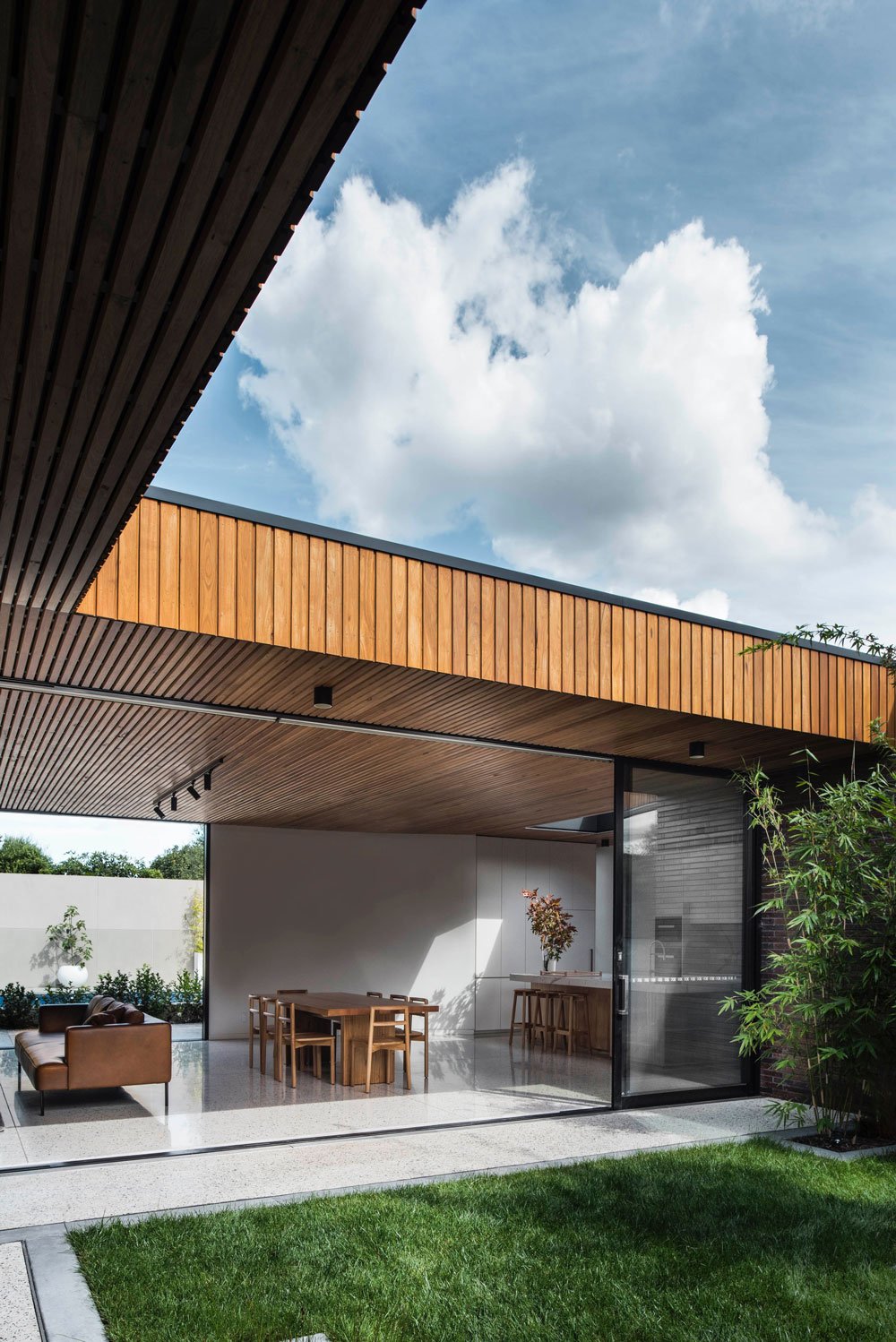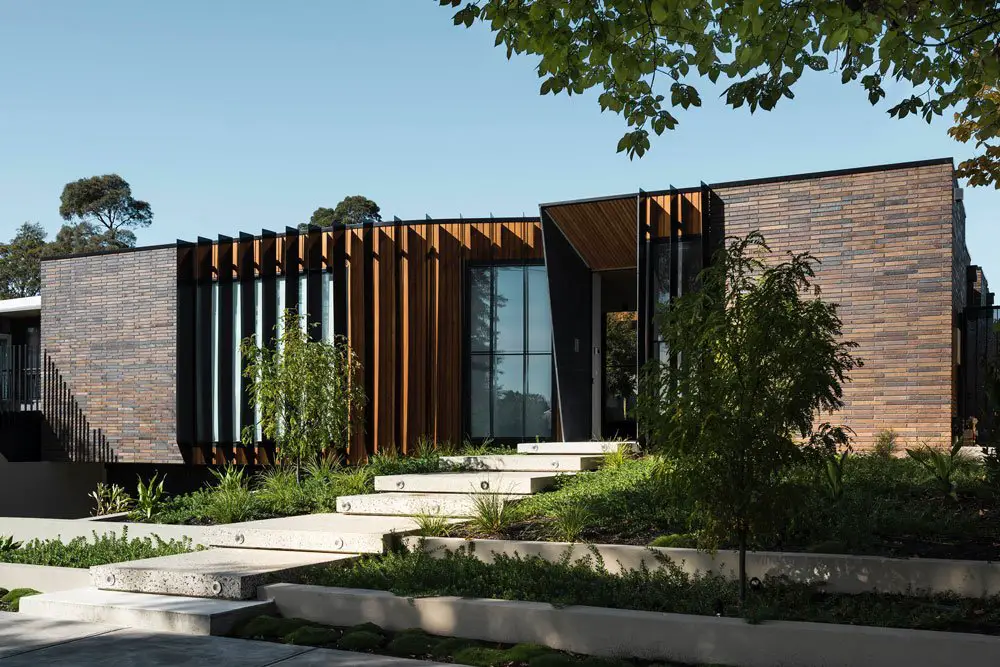A tribute to the owners’ Italian heritage and their working-class roots, the Courtyard House in Templestowe Lower, Australia, is a beautiful modern residential home built by FIGR architects. Designed to ease the owners into the later stages of their lives, the house is a single storey, enabling ease of access, and is centred largely around an intimate Italian palazzo style courtyard, enabling ample sunlight to filter into the home, whilst simultaneously retaining a sense of privacy and seclusion from close neighbours. We caught up with FIGR architects to discuss how they went about approaching the project.
What did your clients ask for in their brief?
The brief from the clients was relatively simple. They wanted to build a ‘forever home’ suitable for the next stage of their life (i.e. good accessibility, low maintenance, single storey with minimal steps). They didn’t want just another double storey rendered box on their site but rather a home that would sit comfortably amongst its neighbours. The home needed to feel like a sanctuary and to be secluded from the neighbouring properties. They wanted a home that felt like a retreat which focused on views of the sky and surrounding tree canopies.
The site was blasted by cold southerly winds in winter and warm northerly winds in summer which meant for us the challenge was to create a home which could allow our clients to enjoy a space no matter what the weather and whilst maintaining privacy. The central courtyard idea was both a pragmatic response to the site conditions as well as a romantic response to our clients’ Italian heritage and their love for the Italian palazzo homes.
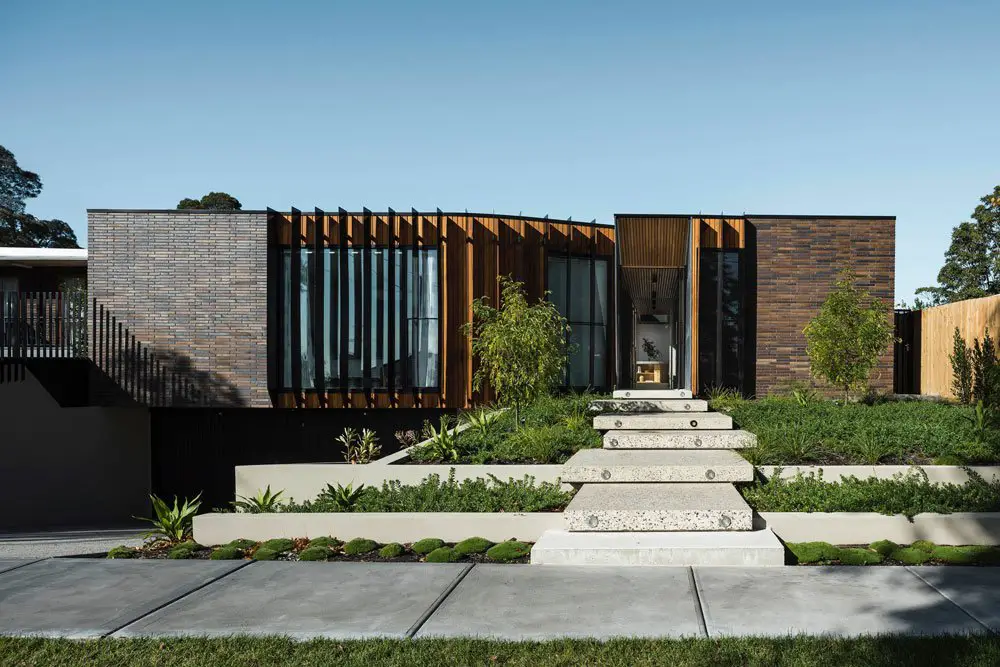
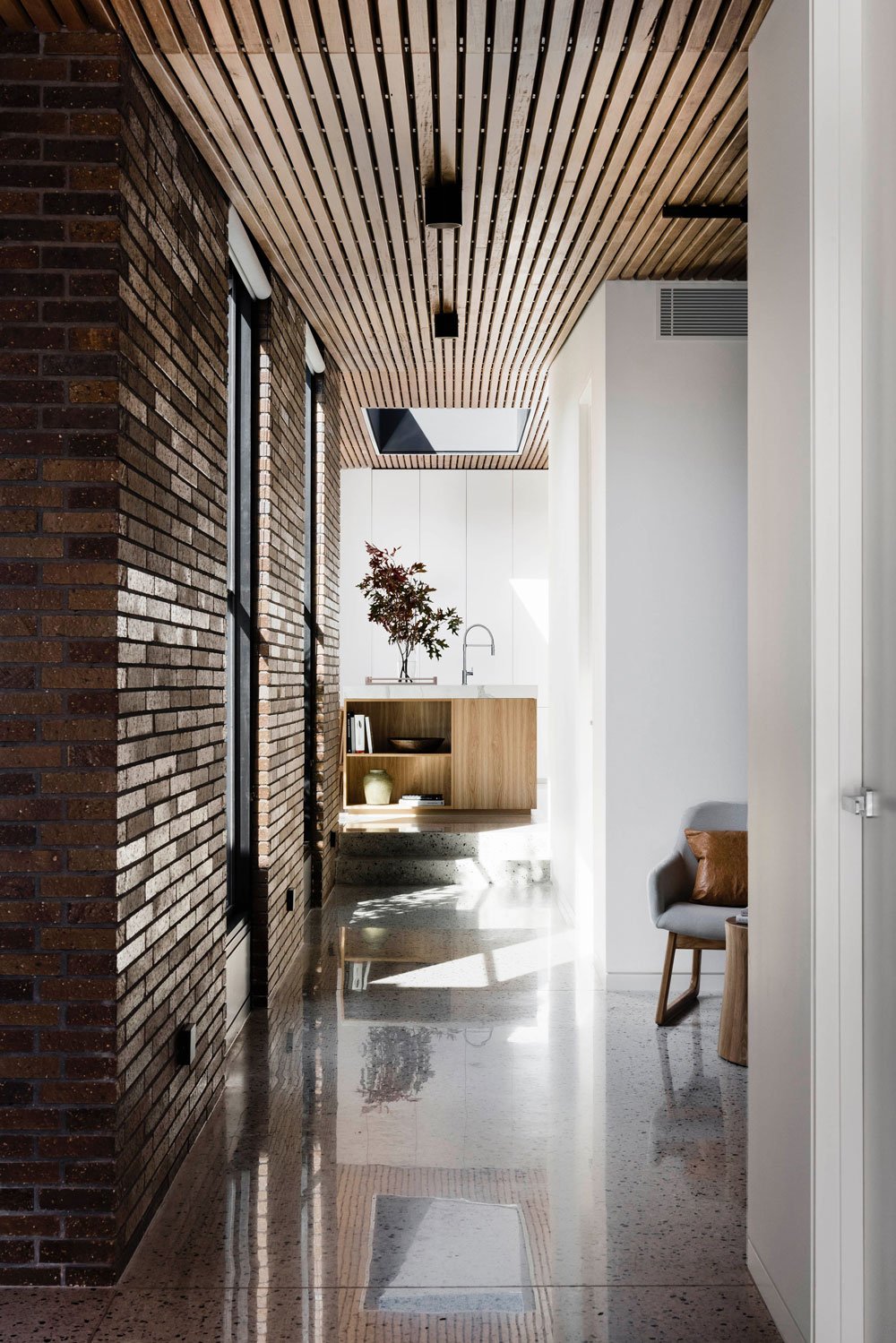
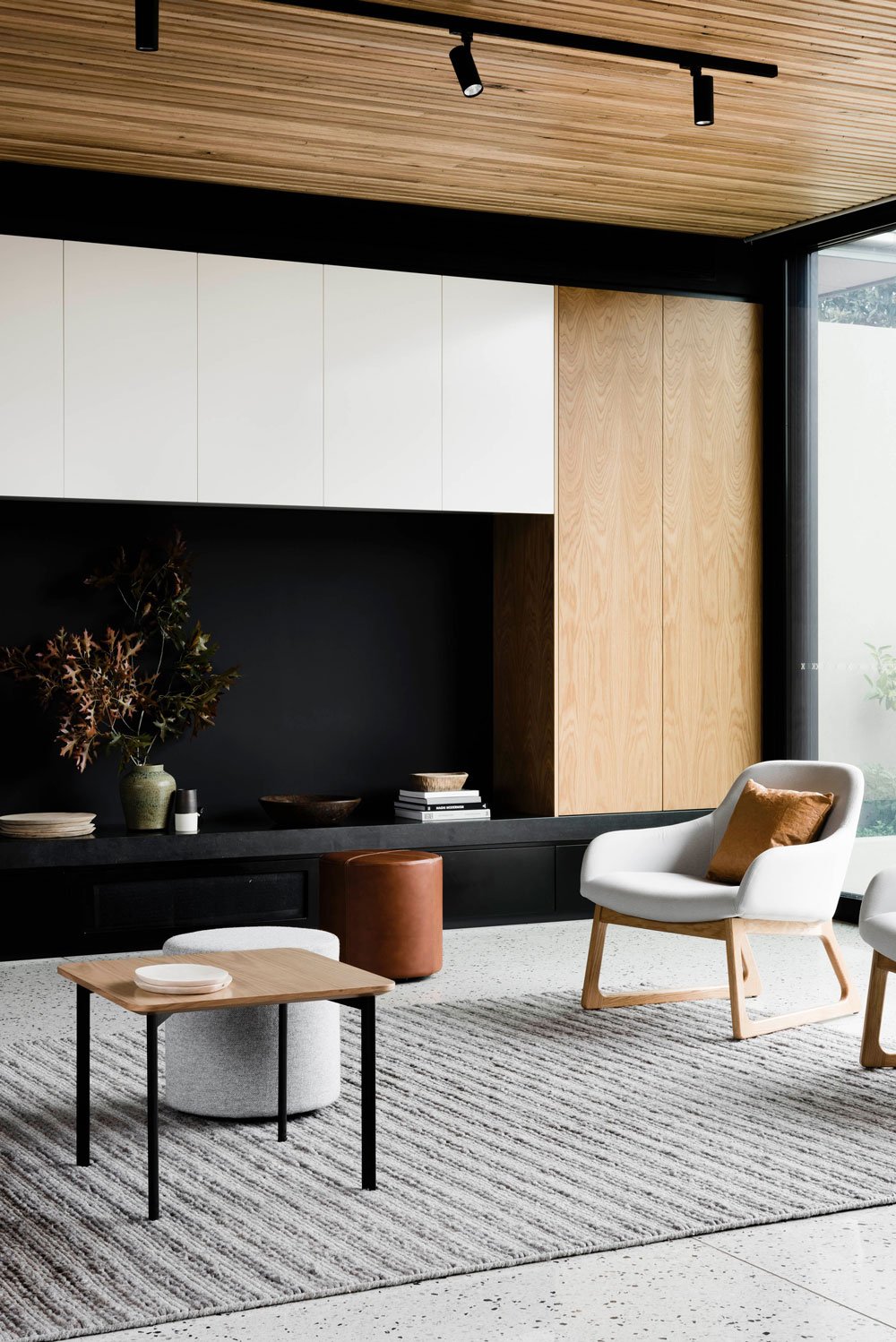
Can you tell us a bit about the project and its owners?
The Courtyard House is a nod to the tradition of the Italian Palazzo and Australian courtyard house, celebrating the constant connection between outdoor and indoor spaces. Coming from a working-class background our clients wanted a home that would reflect the history upon which they have built their life and the memory of their working-class roots, owning and operating a concreting business.
Part of their brief was that we needed to use concrete in some shape and form in the house. We approached the use of the concrete from a romantic point of view where we wanted to express their journey over the years in running the concreting business and as a result, the floating concrete slabs gently ascending up to the entry of the house, are a reference to all their hard work over the years that has led to where they are now. The concrete further extends inside of the house and is the foundation and the concrete flooring inside the living and entry spaces.
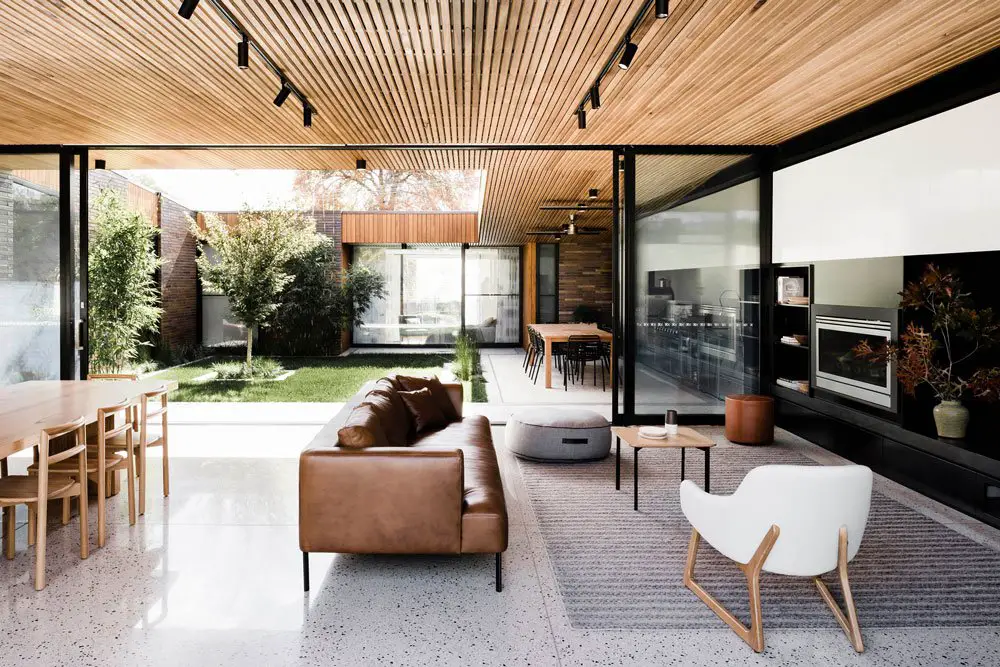
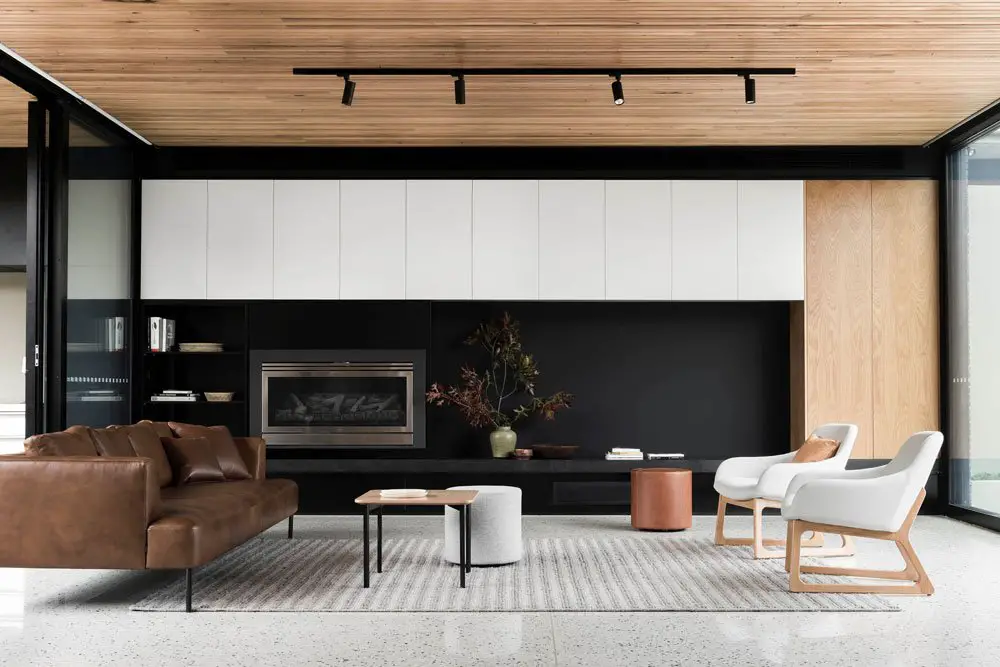
The house is divided by three landscaped zones: the front yard, the courtyard and the rear yard. The landscaped courtyard is the heart of the house, masking the neighbouring dwellings while at the same time revealing canopies of the surrounding trees. This tranquil, calm space has an intimate connection with the interior spaces of the house which reveal themselves from various angles. Further celebration of the landscape and nature is achieved through the material palette.
A low for us during the process was when the timber batten ceiling almost didn’t make it into the build with Yolanda Our Clients being unsure how they were going to sit in the home with a fear that it was going to look like a Swedish sauna. After much deliberation, the clients decided to omit the timber battens from the build. However after a last ditch to save the design intent, they had a change of heart and bravely put their faith and trust in our vision and decided to build the timber ceilings.
Which is your favourite/most important feature of this house and why?
For us it’s a combination of elements working together that make the atmosphere and quality of the space stand out. The timber batten lined ceiling in contrast to the bright polished concrete floor is a stand out feature. We wanted to deliberately shift the focus to the ceiling where the tone, scale and spacing of the timber battens adds warmth scale and a focal point to the living spaces.
ALSO READ: Privacy Comes First in this Modernist House
What materials have you used for this project and why?
Elongated brown bricks from Robertson Emperor Bricks were used to celebrate the exterior fabric of the surrounding context of Templestowe and a further play on the horizontal nature of the built form proportions. It’s a utilitarian material which sits comfortably within its context, and is also a reminder of this once working-class suburb. The brick is also used inside, creating a series of colonnades which are broken by windows, allowing the light of the courtyard to spill into the corridor. The natural timber batten ceiling was composed of Radial Timbers Bevelled Batten oiled with Cutek Clear. The internal timber batten ceiling not only guides and navigates visitors through the spaces, but also creates a dramatic juxtaposition to the white concrete flooring.
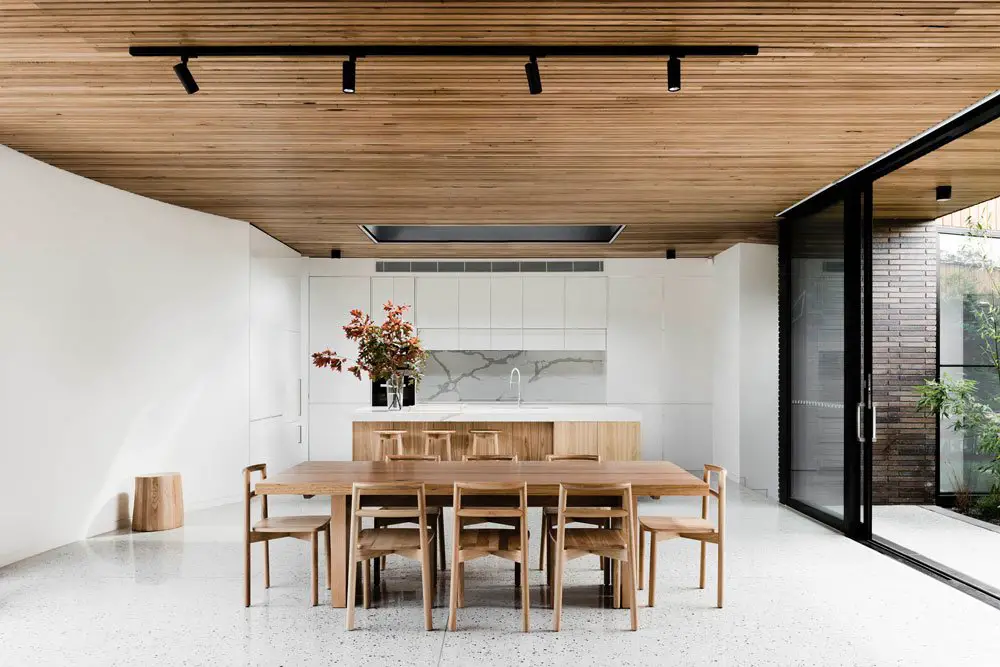
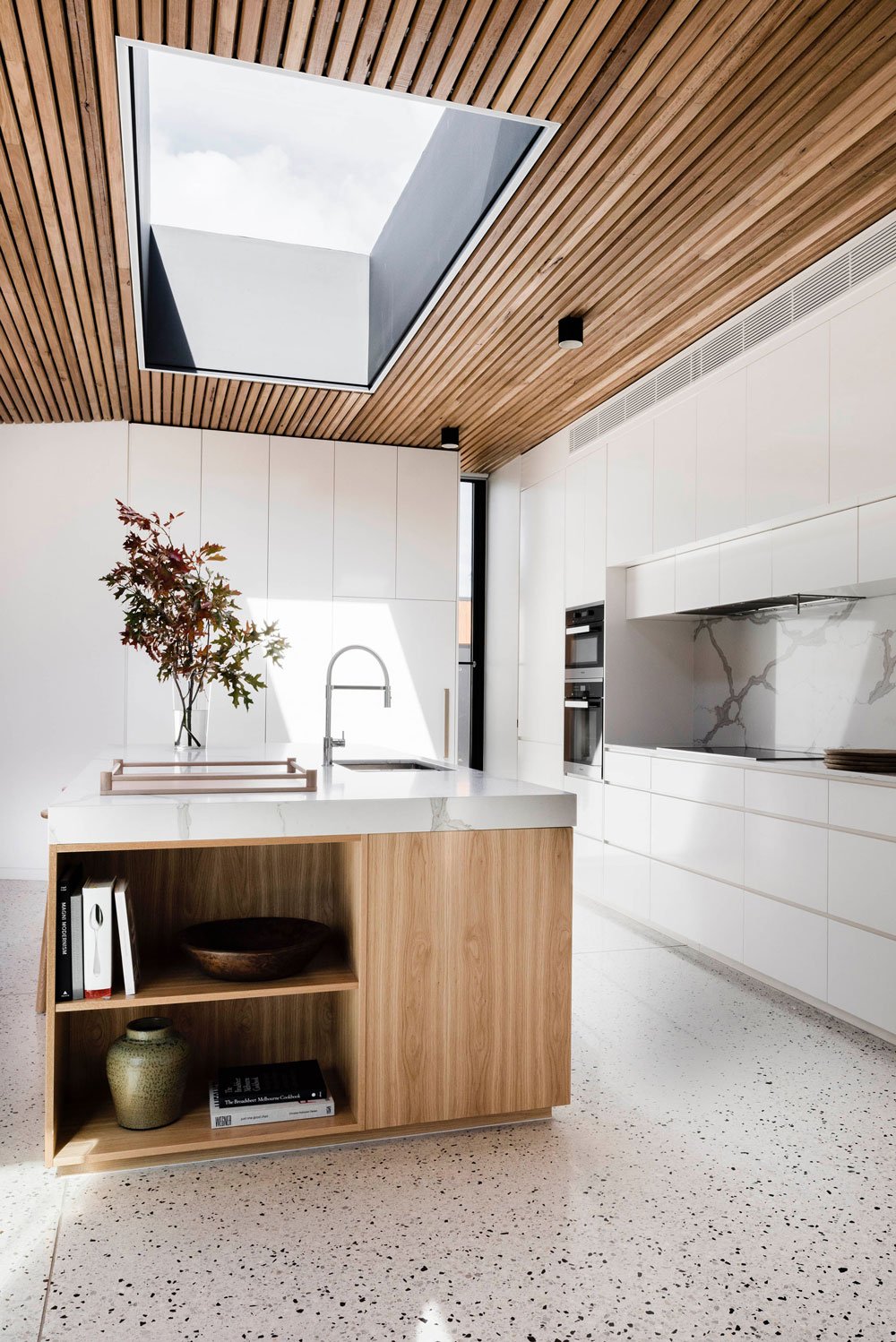
How important was the contribution of your clients, if there was any?
It’s our clients’ contributions that shape and inform the evolution of the design and enrich the outcome with their unique character. Our clients noted the importance of their culture and strong family values plays in their lives. Their travels to Italy and visiting the Italian palazzo’s enabled them to investigate the courtyard model as a contemporary Australian palazzo in the context of Templestowe.
Have you found any inspiration in the mid-century period while designing the house?
We referred to the contextual fabric of Templestowe and its extensive mix of mid-century period brick homes. The design response was appropriate on a contextual as well as a poetic level with the carefully considered use of selected materials, elongated formal qualities and floor plan arrangement.
What was the first question you asked yourself when you got the assignment?
The courtyard model very quickly stood out as a solution to many of the challenges presented by the existing site conditions. On a pragmatic level the courtyard created access to northern amenity as well as providing our clients with a sense of privacy from neighbours. On a poetic level the courtyard is a nod to the traditional Italian palazzo and the Australian courtyard house typology that sits comfortably amongst the neighbouring vernacular.
What advice would you give to someone who just bought a historical house and wants to start a renovation?
Find the right Architect for the job. Make sure your aspirations are aligned. Trust the Architect.
